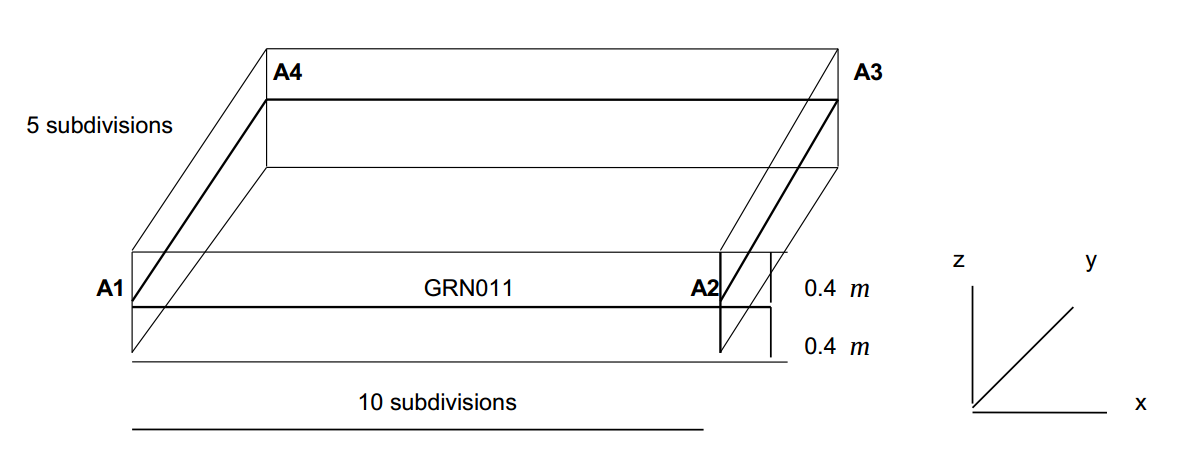1. Reference problem#
1.1. Geometry#

The coordinates of the points are given in meters (\(m\)):
\(A1(0.0\mathrm{,0})\) |
|
\(A2(10.0\mathrm{,0})\) |
|
Table 1.1-1
The thickness of the plate is \(e\mathrm{=}\mathrm{0,8}m\)
1.2. Material properties#
The material has an isotropic elastic behavior:
Young’s module: \(E\mathrm{=}200000\mathit{MPa}\)
Poisson’s ratio: \(\nu \mathrm{=}0\)
1.3. Boundary conditions and loads#
Edge \(\mathit{A1A4}\) is embedded.
A \(\mathit{Fz}\mathrm{=}–1000N\) nodal force is applied to the \(\mathit{A2A3}\) edge.
1.4. Modellations#
The different models are:
Modeling |
Element Type |
Meshes |
Number of mesh elements |
A |
DST |
|
50 |
B |
DST (multi-layered, \(\mathit{ncou}\mathrm{=}2\)) |
QUAD4 |
50 |
C |
Q4G |
QUAD4 |
800 |
D |
Q4G (multi-layer, \(\mathit{ncou}\mathrm{=}2\)) |
QUAD4 |
800 |
E |
DST |
|
1600 |
F |
DST |
|
1600 |
Table 1.4-1